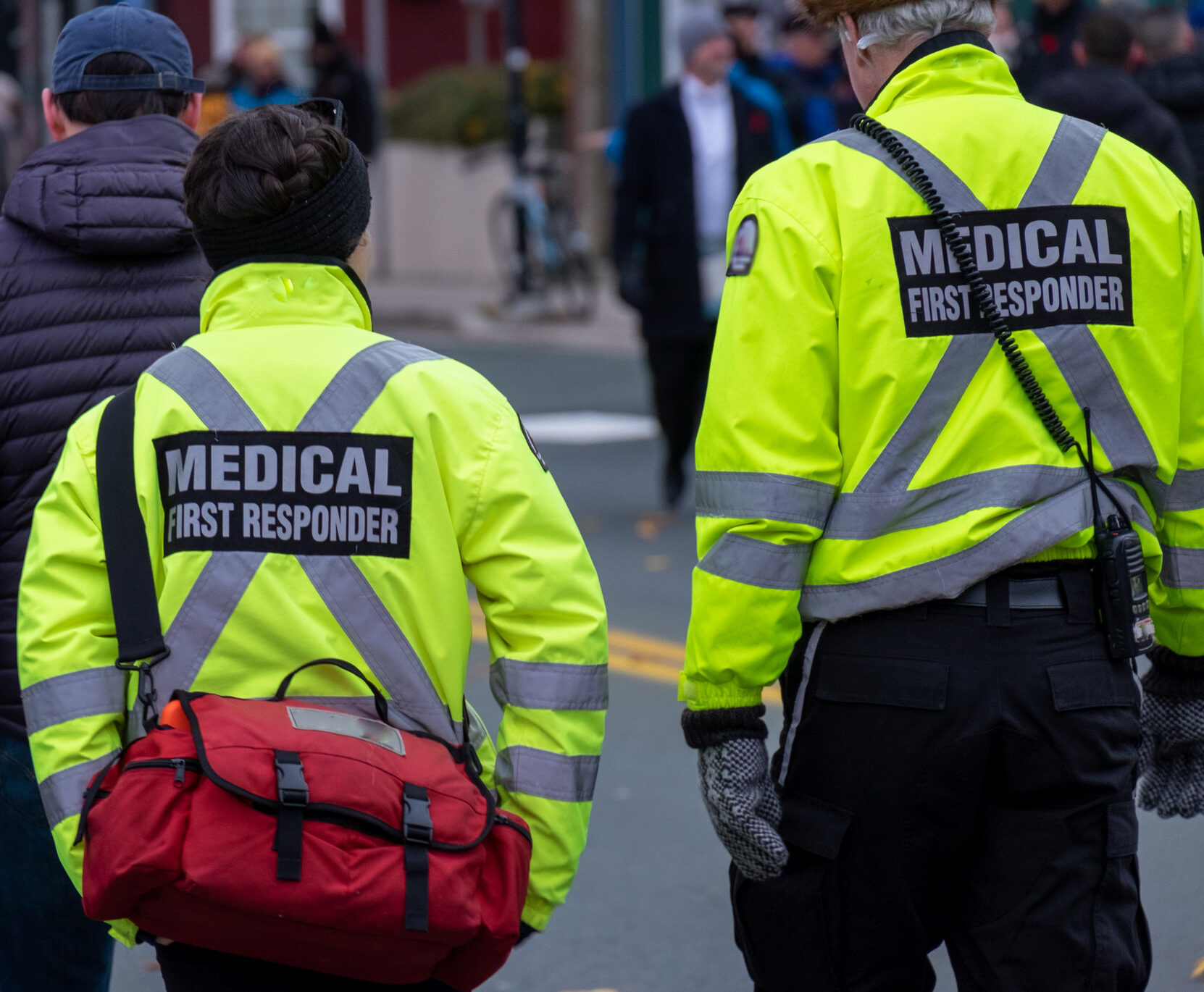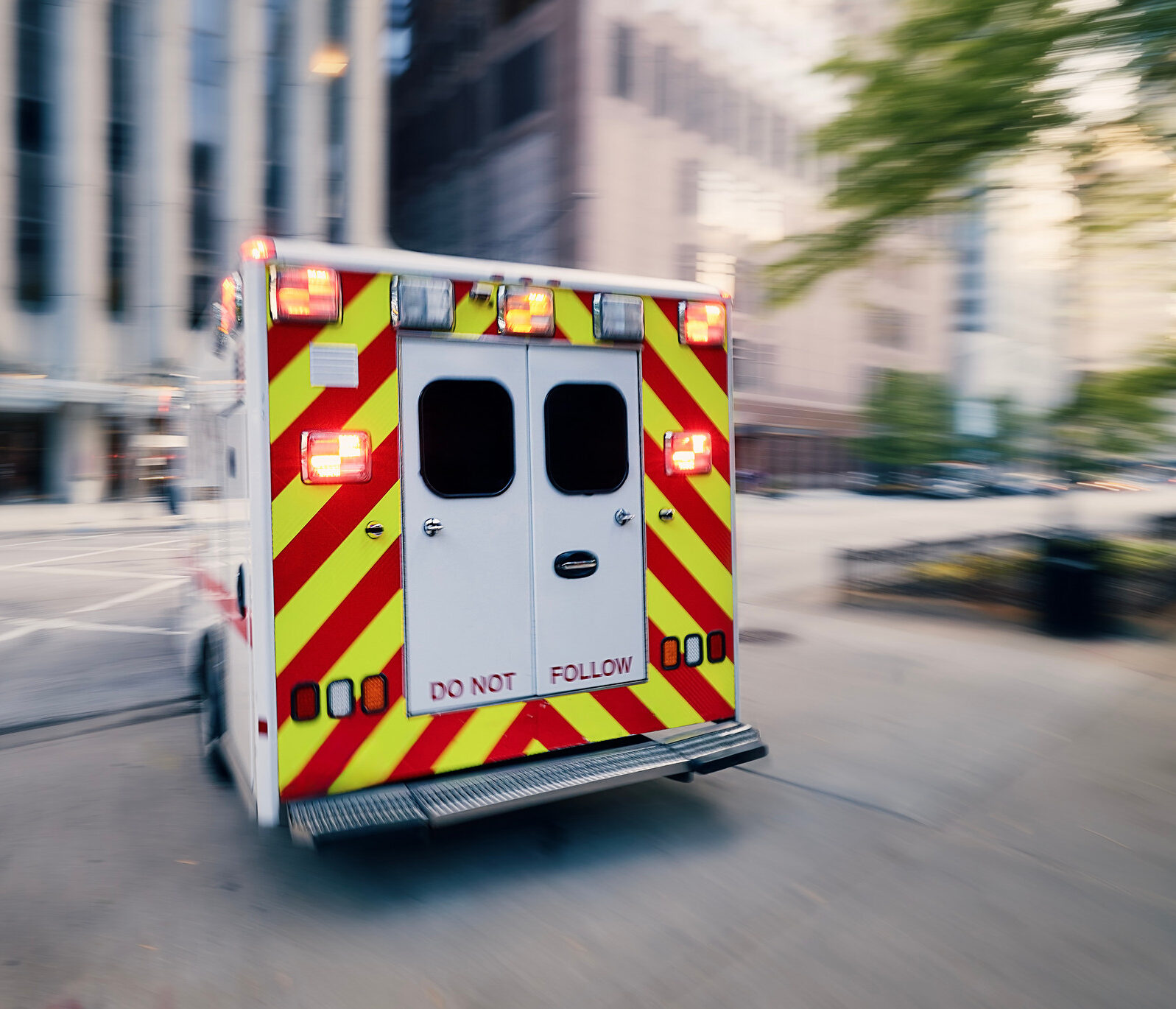About MN Bridge
Created in response to a clear need voiced by EMS professionals across Minnesota for more support, tools, and guidance in addressing the opioid crisis from the field.

Funded by the Minnesota Department of Health and led by experienced EMS and Emergency Medicine professionals, MN Bridge empowers first responders across Minnesota to lead innovative, low-barrier responses to the opioid crisis. The program provides the tools, training, and clinical support needed to deliver compassionate, evidence-based care that begins in the field and continues beyond the 911 call.
At its core, MN Bridge is about helping EMS systems shift from reactive overdose response to proactive, patient-centered intervention, transforming how care is delivered to individuals with opioid use disorder.
We support EMS by:
- Supporting field-based buprenorphine: Offering guidance on protocols, workflows, and training to help EMS initiate buprenorphine for patients in withdrawal, whether after naloxone use or opioid cessation.
- Equipping harm reduction tools: Assisting agencies in distributing Narcan leave-behind kits and carrying fentanyl/xylazine test strips on ambulances.
- Delivering operational resources: Providing protocols, workflows, and implementation strategies tailored to EMS system needs.
- Hosting provider education: Sharing national expertise through webinars, podcasts, and training from frontline leaders.
- Offering 24/7 clinical support: Connecting responders to 24/7 MOUD guidance via the Minnesota Poison Control Center.
Built by emergency providers, for emergency providers—because the opioid crisis doesn’t stop at the hospital doors, and neither can we.


Born Out of a Need
EMS has always answered the call in moments of crisis, but the opioid epidemic demands more than revival. It calls for intention, compassion, and action. in the moments we do have.
Nearly one-third of people who die from an opioid overdose had at least one encounter with EMS in the year before. That may be the only chance to connect, offer dignity, and shift a trajectory. MN Bridge supports EMS systems to make those moments count by evolving how we engage, intervene, and lead in the face of this crisis.
FAQs
Find answers to common questions about protocols, training, implementation, and resources—so you can focus on delivering effective care.
Addressing Common Concerns
Does offering medications like buprenorphine or Narcan enable drug use?
No. Evidence is clear: medications for opioid use disorder (MOUD) like buprenorphine cut overdose death rates in half and dramatically increase engagement in treatment. Narcan (naloxone) is a life-saving tool that reverses overdoses—it does not encourage substance use. Offering these tools is a proven public health strategy grounded in saving lives, not enabling addiction.
Aren’t harm reduction tools like fentanyl or xylazine test strips just giving users more ways to keep using?
Actually, harm reduction tools empower people to make safer choices and stay alive long enough to access treatment when they’re ready. Studies show people who use these tools are more likely to seek care, not less. Providing test strips is a practical way to reduce risk in an unpredictable drug supply.
Isn’t EMS supposed to just stabilize and transport—not treat addiction?
EMS has always adapted to the evolving needs of the community. In the opioid crisis, EMS is often the only medical contact someone may have. Offering compassionate, evidence-based care during that encounter—including medications and harm reduction resources—is not mission creep—it’s lifesaving care.
Shouldn’t we wait for people to ask for help before offering treatment or resources?
The reality is many patients don’t know where to start or feel too ashamed to ask. Offering tools like buprenorphine, Narcan kits, or test strips during a moment of crisis can break through that barrier and create a pathway to recovery. It’s not about forcing care—it’s about offering a door they can choose to walk through.
Who can I contact if I have questions about a patient in opioid withdrawal or experiencing worsened symptoms after buprenorphine?
Consider speaking with your EMS Medical Director or utilizing your online medical control. If you need additional support, call the experts at the Minnesota Poison Center at 1-800-222-1222. They are up to date on EMS Bup and available 24/7 for consultation.
Is it OK to give buprenorphine if there’s no guaranteed Day 2 plan or follow-up in place?
Yes—it’s not only OK, it’s important. Administering buprenorphine (Suboxone) during an EMS or emergency department encounter can significantly reduce a patient’s immediate withdrawal symptoms and lower their risk of overdose for the next 24 hours. In fact, the evidence is clear: patients who receive buprenorphine during an emergency visit are more likely to engage in ongoing treatment, and even a single dose can be lifesaving.
We often hear concerns about starting treatment without a clear plan for next steps—but in emergency medicine, we do this all the time. We give aspirin for chest pain even when a patient doesn’t have a cardiologist. We give dextrose to patients with low blood sugar even if they don’t have an endocrinologist. The same logic applies here. Starting buprenorphine is a critical, evidence-based intervention—one that treats suffering in the moment and protects life.
Patients who’ve just experienced an overdose are often not yet ready to make long-term decisions about sobriety. But helping them feel better and restoring some stability by relieving withdrawal is a powerful and humane first step.
Connecting patients to community resources or online programs like Yourpath are great, but don’t view lack of follow up care as a barrier to putting Bup on your rigs.
Who can I contact with questions about implementing EMS initiated buprenorphine?
Contact us using the “contact us” form or email holly@mnbridge.org, tim@mnbridge.org
About the Program
What is MN Bridge?
MN Bridge is a statewide initiative supporting EMS and emergency providers in delivering low-barrier, evidence-based care for patients with opioid use disorder (OUD). We offer protocols, training, clinical support, and harm reduction tools to help providers lead the response to the opioid crisis—starting in the field.
Who is MN Bridge for?
MN Bridge is designed for EMS systems, emergency departments, urgent care providers, and community partners across Minnesota. While our primary focus is EMS, we welcome collaboration from anyone engaged in emergency response or addiction care.
What kind of support does MN Bridge offer EMS systems?
We help agencies adopt field-based buprenorphine protocols, provide model SOPs and training materials, assist with implementing Narcan leave-behind kits and test strips, and offer clinical consultation via the Minnesota Poison Control Center. We also produce ongoing education, webinars, and a podcast featuring experts in prehospital OUD care.
Do we have to already be doing buprenorphine to participate?
No. MN Bridge supports systems at all stages—whether you’re just exploring your options or ready to roll out a full field induction protocol. We’ll meet you where you are.
Is this only for ALS systems?
Not at all. While some protocols (like buprenorphine) may currently require ALS-level care, we support harm reduction efforts, education, and resource distribution (like Narcan and test strips) for BLS systems as well.
Who funds MN Bridge?
MN Bridge is funded by the Minnesota Department of Health as part of a broader statewide strategy to reduce overdose deaths and expand access to treatment.
Is there a cost to participate?
No. MN Bridge is a publicly funded initiative, and all resources, consultation, and support are provided at no cost to participating agencies.
Have Questions for Our Experts?
For urgent, time-sensitive clinical questions, please contact the 24/7 EMS Support Line at 1-800-222-1222.
For inquiries related to program development, training, or general information, please contact us.
We’re here to support you—whether you’re on scene or building the future of EMS care in Minnesota.